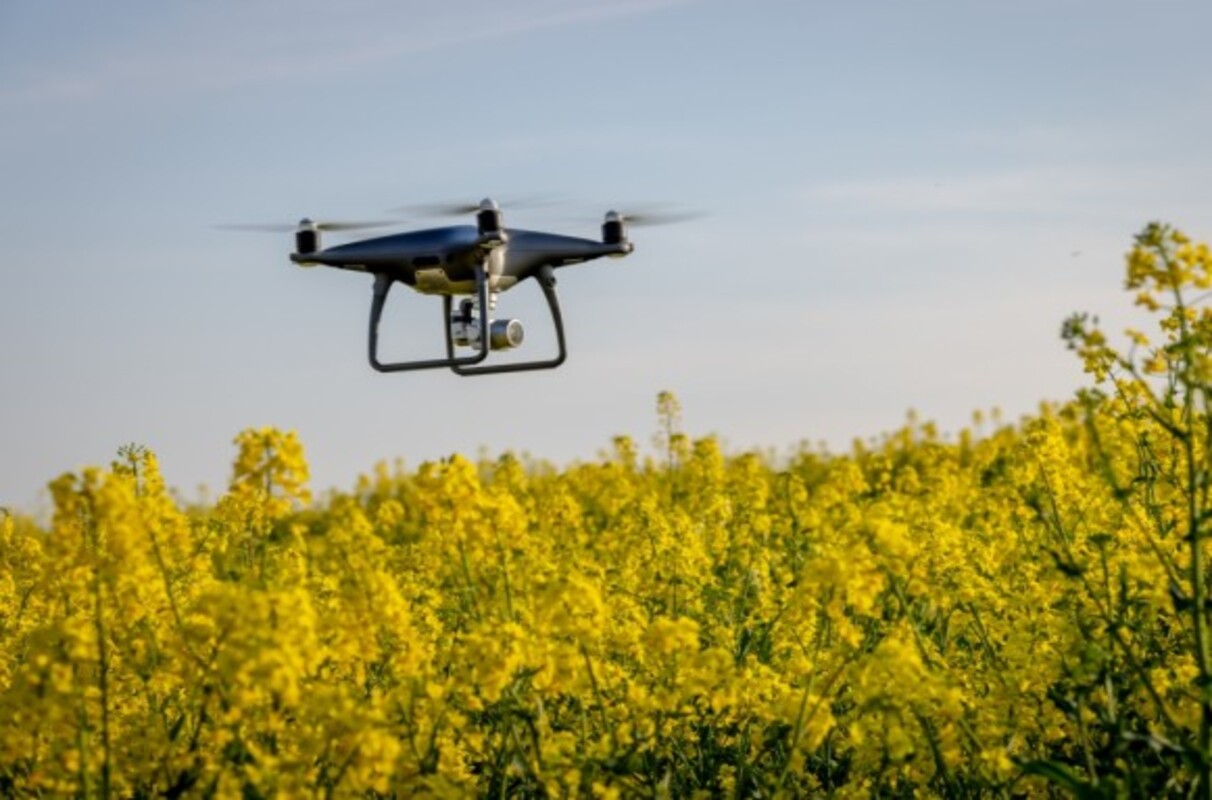
The agriculture sector can use various modern technologies to boost productivity. Some farmers who have capitalized on these technologies in multifarious ways have also reaped the benefits. This has helped farmers in many ways. On one hand, it has reduced their production costs, while on the other, it has made the farming process less complicated and time-consuming.
Technology is rapidly transforming the Indian agricultural landscape, ushering in a wave of innovation to tackle some of the sector's long-standing challenges. As an example, the 'Namo Drone Didis' initiative by the Indian government promotes the usage of drones among women. Through this initiative, 15,000 self-help groups will be connected to train women to become drone pilots. These drones will be utilised for agricultural purposes, such as crop monitoring, fertilizer spraying, and seed sowing, providing additional income opportunities for women as well as promoting extensive use of tech in better farming solutions.
Here's a glimpse into how tech is shaping Indian agriculture:
Precision Agriculture: This data-driven approach uses sensors, drones, and satellite imagery to gather real-time information on soil conditions, crop health, and weather patterns. This empowers farmers with actionable insights to optimize resource use, like water and fertilizer, for targeted applications.
Automation and Robotics: Manual labour is getting a high-tech upgrade. Tasks like sowing, transplanting, and harvesting are increasingly being automated with advanced machinery and robots. This not only reduces dependence on manual labour but also improves efficiency and productivity.
Improved Seed Technology: Bioengineered seeds with desirable traits like pest resistance, higher yields, and drought tolerance are leading to a significant improvement in crop resilience and overall production.
Artificial Intelligence (AI): AI is playing a crucial role in analysing agricultural data to predict disease outbreaks, optimize irrigation schedules, and even automate decision-making for farmers. This allows for more precise crop management and minimizes risks.
Digital Platforms and E-commerce: Technology is bridging the gap between farmers and consumers through online marketplaces. These platforms establish a direct connection between farmers and buyers, cutting out middlemen and securing better prices for their produce.
While these advancements are promising, there are roadblocks to wider adoption. These include:
• Limited access to technology and infrastructure: Many small and marginal farmers lack the resources and knowledge to invest in new technologies.
• Digital literacy gap: Bridging the digital divide and educating farmers on using these tools effectively is crucial for broader tech adoption.
• Sustainability concerns: Ensuring responsible use of technologies like genetically modified seeds and proper management of e-waste generated from discarded gadgets is vital.
Despite these challenges, the future of Indian agriculture looks promising. Government initiatives promoting tech adoption, continuous innovation in the agritech sector, and collaborative efforts to address accessibility issues are paving the way for a more sustainable, efficient, and profitable agricultural landscape for India.
Article Contributed by Deepankar Khare, Joint Director, MAIT
The agriculture sector can use various modern technologies to boost productivity. Some farmers who have capitalized on these technologies in multifarious ways have also reaped the benefits. This has helped farmers in many ways. On one hand, it has reduced their production costs, while on the other, it has made the farming process less complicated and time-consuming.
Technology is rapidly transforming the Indian agricultural landscape, ushering in a wave of innovation to tackle some of the sector's long-standing challenges. As an example, the 'Namo Drone Didis' initiative by the Indian government promotes the usage of drones among women. Through this initiative, 15,000 self-help groups will be connected to train women to become drone pilots. These drones will be utilised for agricultural purposes, such as crop monitoring, fertilizer spraying, and seed sowing, providing additional income opportunities for women as well as promoting extensive use of tech in better farming solutions.
Here's a glimpse into how tech is shaping Indian agriculture:
Precision Agriculture: This data-driven approach uses sensors, drones, and satellite imagery to gather real-time information on soil conditions, crop health, and weather patterns. This empowers farmers with actionable insights to optimize resource use, like water and fertilizer, for targeted applications.
Automation and Robotics: Manual labour is getting a high-tech upgrade. Tasks like sowing, transplanting, and harvesting are increasingly being automated with advanced machinery and robots. This not only reduces dependence on manual labour but also improves efficiency and productivity.
Improved Seed Technology: Bioengineered seeds with desirable traits like pest resistance, higher yields, and drought tolerance are leading to a significant improvement in crop resilience and overall production.
Artificial Intelligence (AI): AI is playing a crucial role in analysing agricultural data to predict disease outbreaks, optimize irrigation schedules, and even automate decision-making for farmers. This allows for more precise crop management and minimizes risks.
Digital Platforms and E-commerce: Technology is bridging the gap between farmers and consumers through online marketplaces. These platforms establish a direct connection between farmers and buyers, cutting out middlemen and securing better prices for their produce.
Challenges and the Road Ahead
While these advancements are promising, there are roadblocks to wider adoption. These include:
• Limited access to technology and infrastructure: Many small and marginal farmers lack the resources and knowledge to invest in new technologies.
• Digital literacy gap: Bridging the digital divide and educating farmers on using these tools effectively is crucial for broader tech adoption.
• Sustainability concerns: Ensuring responsible use of technologies like genetically modified seeds and proper management of e-waste generated from discarded gadgets is vital.
Despite these challenges, the future of Indian agriculture looks promising. Government initiatives promoting tech adoption, continuous innovation in the agritech sector, and collaborative efforts to address accessibility issues are paving the way for a more sustainable, efficient, and profitable agricultural landscape for India.
Article Contributed by Deepankar Khare, Joint Director, MAIT
Comments (0)
Leave Your Comment: